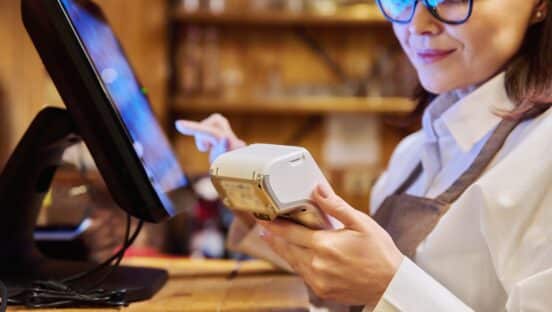There is no question that two of the key biggest factors in a quick-service brand’s success are team and technology. Yet despite the importance of these two factors, challenges in either sector have often been considered as separate issues.
However, Seth Remaley, senior director of global account managementat Mood Media, believes that these two factors are more linked than industry leaders might believe, especially now that brands are doing so much of their business through the drive thru.
“Team and technology are often placed into silos,” Remaley says, “but in order to be successful now when drive-thru speed is so critical, you have to make sure every piece of equipment is functioning and also that your team is trained effectively, otherwise you won’t see results. This means every restaurant has to take a fresh look at how they’re training, motivating, and engaging their teams, along with the technology and processes they’ve provided to reinforce that training. ”
So how does a brand balance the training and technological concerns that face restaurants today?
First, Remaley says restaurants need to ensure their drive-thru equipment is in perfect working order. This means operators should not only check whether they have a good timer, base station, and headsets, but also implement maintenance or rapid exchange programs to ensure locations have enough working headsets for each shift.
Next, Remaley says restaurants should also consider which technology they use to monitor and communicate with crew members.
“Many quick-service operators are already exploring digital signage as a strategic employee communication tool, but they are really only scratching the surface of what is possible within the industry today,” Remaley says. “Not only can digital communication make it simpler to communicate messages on short notice, but restaurants now also need to grapple with how to share messages based on the needs of individual locations. This makes it crucial for brands to invest in digital communication tools that allow them to segment which messages go to each store, especially as local restrictions across the nation change in the coming months. Similarly, static signage can’t keep up with these changes, so brands that haven’t invested in employee-facing digital signage might want to consider doing so sooner rather than later.”
Remaley says the placement of employee-facing digital signage is equally as important as the screen’s functionality. Many brands have seen success from rolling out digital signage near the timeclock for store-wide messages, along with individual screens at various workstations for job-specific training.
Finally, once those communication tools are in place, it’s crucial for brands to implement thoughtful training programs by designing engaging content for each screen. For example, Remaley says, the information a cook needs will differ from the information needed by an employee working the drive-thru window. Digital signage can help brands manage all the training information employees need to be effective in one space and pair that with eye-catching video or graphics that improve clarity and retention, especially among younger employees.
“Millennials and Gen Z employees spend most of their time off the clock looking at screens at home,” Remaley says. “They’re used to engaging with digital content, and this is creating a major shift within the industry for how content can be most effectively delivered to these younger employees. If you want to send a critical message and make sure these employees understand it, digital signage cuts through the clutter with engaging and dynamic content.”
Though changing up a restaurant’s training and communication programs can be a challenge, Remaley notes that digital signage is an easy way to do so.
He says, “While new technology can be intimidating, digital signage is simple and fun, and it can help every employee stay up to speed.”
To learn more about how technology can help bolster team performance, visit the Mood Media website.
By Peggy Carouthers













